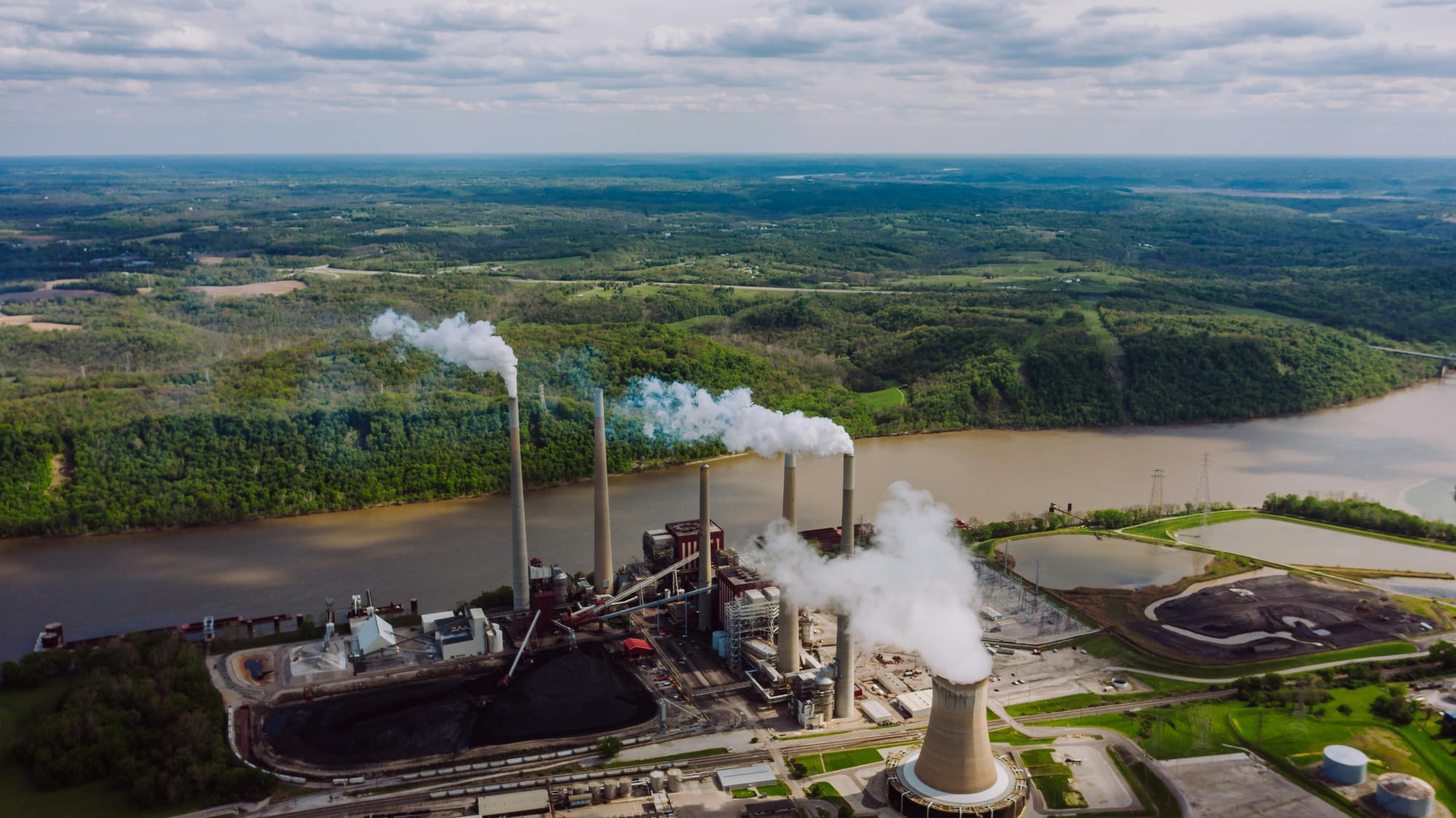Responsible Nature Investing: Start with Your Own Supply Chain
Nature investment is gaining momentum. However, much of this funding goes to external nature restoration projects. To address the root causes, businesses must assess how their own operations affect nature.

The Rise of Nature Investment
Over the past 150 years, deforestation and fossil fuel burning have pushed Earth's resilience to its limits. However, hope remains - nature absorbs 56% of CO₂ emissions, acting as a natural carbon buffer. It also provides essential resources for industries such as food, fashion, and cosmetics. To ensure both business and planetary resilience, investing in nature must be seen as a core economic priority.
Nature investment is gaining momentum. Private funding for nature-focused initiatives surged from $9.4 billion to $102 billion in just four years, while biodiversity bonds increased from 5% in 2020 to 16% in 2023. Much of this funding supports nature restoration projects and carbon credit schemes. While beneficial, many of these efforts occur outside companies’ supply chains, failing to address the root causes of environmental degradation.
To address these root causes, businesses must go beyond external initiatives and assess how their own operations affect nature. Only by integrating nature-positive strategies into their own operations and supply chains can companies mitigate risks such as supply chain shocks and regulatory non-compliance while ensuring long-term sustainability.
Business Impacts on Nature
Many industries contribute significantly to environmental degradation. Addressing these impacts within supply chains is critical for long-term sustainability and compliance.
Industries Most at Risk of Nature Non-Compliance
Agriculture & Food
- Responsible for 80% of global deforestation and 70% of biodiversity loss.
- Within this sector, just seven agricultural commodities - cattle, oil palm, soy, cocoa, rubber, coffee and plantation wood fiber - accounted for more than a quarter of recent tree cover loss around the world. In some countries, the impact can be even more significant: For example, 70% of Ivory Coast’s illegal deforestation is linked to cocoa plantations.
Cosmetics
- Dependence on palm oil leads to habitat destruction for species like orangutans and tigers. 43% percent of Tesso Nilo National Park in Sumatra—which was established to provide habitat for the endangered Sumatran Tiger—has now been overrun with illegal palm oil plantings.
- Overharvesting of natural ingredients such as shea butter and argan oil depletes resources. According to the Food and Agriculture Organization of the United Nations, shea trees maintain a vulnerable conservation status on the IUCN Red List mainly due to extensive human activity and climate change pressures.
- Many beauty products create a high demand for natural oils, leading to extensive and intensive cultivation, harming natural habitats through deforestation, and contaminating soil and water through pesticides and fertilizers.
Fashion
- Wool, silk, and fur industries contribute to habitat destruction and overgrazing. 70% of pastureland in Mongolia is estimated to have been degraded to some extent through a combination of climate change and overgrazing, for cashmere wool.
- The leather industry drives deforestation and methane emissions from cattle farming. In Brazil, land clearing to raise cattle killed for food and fashion is responsible for 80% of the Amazon’s deforestation.
- Water overuse: Producing a single cotton T-shirt requires 2,700 liters of water, equivalent to a person's water consumption over 2.5 years.

Nature Impacts Throughout the Supply Chain
Environmental degradation occurs at every stage of the supply chain, often hidden by complex global networks. Without tracing and measuring these impacts, businesses cannot manage them effectively.
- Raw material sourcing: Deforestation, soil depletion, and habitat destruction.
- Production processes: Water overuse, pollution, and excessive waste.
- Distribution & logistics: Carbon emissions from transportation.
- End-of-life product disposal: Waste management and landfill overflow.
In other words, the root cause of environmental degradation lies in the way that businesses produce, distribute and dispose of their products. So this is what businesses need to focus on to reduce degradation. Ignoring their own supply chain impacts while investing in external restoration projects elsewhere doesn’t fix the problem that causes the degradation – so it is inefficient and ineffective. True nature investment requires businesses to change how they operate, not just how they donate.
Internal vs. External Nature Investment
Nature investment supports the health and restoration of ecosystems. The most effective approach is improving operations and supply chains to be less nature-invasive and transitioning to a nature-positive business model.
In doing so, rather than focusing solely on external conservation efforts, businesses should prioritize in-house nature investments:
- Supply chain transparency tools to understand where your raw materials are coming from, and to monitor and minimize their environmental impacts.
- Sourcing of sustainable raw materials, to ensure that what goes into your products doesn’t harm nature.
- Sustainable land use to maintain soil health, reduce water consumption and ensure long-term resource availability throughout your supply chains.
For many businesses, these steps can seem overwhelming. That’s why we advise to follow a three-step approach:
- Trace – Use AI and data integration tools to map where your business interacts with nature and identify the main supply chain impacts. Understanding what is happening to nature when you produce is a great first step.
- Assess – Leverage analytical talent and AI tools to transform complex environmental data into actionable insights and clear action plans, prioritizing high-risk areas and vulnerable species. Knowing where to start, and where your action will have the biggest benefit to nature, is another huge step forward.
- Report – Translate findings into sustainability reports for regulatory compliance and strategic decision-making. This is a legal requirement for many businesses due to regulations such as the Corporate Social Responsibility Directive (CSRD) and the EU Deforestation Regulation (EUDR). Automating a large part of these reports allows you to focus your time on driving meaningful change.
Don't Let Perfection Stand in the Way of Progress.
The key is to start—even with a broad understanding—of where your biggest impacts lie and which actions will bring the greatest benefits. Trying to tackle everything at once can be overwhelming and lead to paralysis. Instead, focus on identifying and prioritizing a few key actions, improving step by step. Progress matters more than perfection.
Benefits of Nature Investment
Investing in nature is not just about mitigating harm - it offers significant strategic advantages:
- Financial Benefits – 50% of global GDP depends on nature. Investing in nature-based solutions could save $104 billion by 2030.
- Risk Mitigation – Preventing soil degradation ensures long-term agricultural productivity. Environmental damages from fossil fuels, agriculture, and fisheries could cost the global economy $10-25 trillion annually.
- Regulatory Compliance – Easily comply with regulations such CSRD and EUDR, and guidelines such as TNFD (Taskforce on Nature-related Financial Disclosures).
- Business Resilience – Healthy ecosystems provide stability against nature-related disruptions, such as supply chain shocks.

10 Key Actions for Nature Investment
- 🌱 Prioritize Biodiversity – Allocate resources to biodiversity protection alongside emissions reduction.
- 🤝 Collaborate for Impact – Partner with stakeholders, NGOs, and governments to drive systemic change.
- 🖥️ Use AI & Analytics – Leverage technology to make nature impact reporting and regulatory compliance easier.
- 🌳 Embed Nature in Decision-Making – Align products and operations with environmental taxonomies.
- 🎯 Set High-Impact Targets – Work with key clients to reduce environmental harm and enhance sustainability disclosure.
- 📝 Leverage Existing Disclosures – Utilize climate, deforestation, and water security reports for nature risk assessment.
- 🌍 Integrate Nature in Risk Management – Make nature-related risks a core part of business strategy.
- 🤝 Develop Science-Based Transition Plans – Set measurable goals for climate and nature impact reduction.
- 📉 Phase Out Harmful Activities – Gradually eliminate practices that contribute to environmental degradation.
- 🥇 Lead by Example – Take action despite market hesitation - leadership drives industry-wide change.
Ready to Make a Difference?
At natplus we specialize in tracing, assessment, and reporting of nature-related risks and impacts throughout your supply chain. Our AI-powered, science-based tools, combined with expert guidance from our nature consultants, provide you with the insights and strategies needed to invest in nature and help your business become nature-positive.

All via our easy-to-use, automated platform – so you can seamlessly comply with nature, all in one place.
Visit our website to explore how we can support your journey toward sustainable, resilient and nature-positive operations, and book a demo of our platform today.

